With the arrival of spring, when the snow is rapidly melting under the warm rays of a gentle sun, the dackets rush to their sections. And there they raise the mood bright unpaired flushed flowers. Hundreds of years they cultivate the flowerflowers of the whole world. Now at the flower beds there are different types and forms of primulus - sillery (ordinary), indispensable, gear, orchid, muscaria, chandelier (tier), spherical, bellolchid, Japanese. Today we will tell you more about the varieties and cultivation of the Ushka Primulus, which they especially read, love and collect the British.
General information about Primula Ushkova
One of the famous legends narrates that the apostle Peter, who was instructed to guard the gate of Paradise, beeping once. And then fell out of his hands a bunch with gold keys from the heavenly kingdom. Having spoiled, Peter hurriedly sent his angel, so that he could catch the keys. But they still fell to Earth. And in those places where the key fell, immediately grew a "curly" golden flower. So in these plants, glitter, beauty and shape of a bundle of gold keys were connected. The legend reports that everything happened on the German Earth, and the flower got the name "Keys", formed from the German word "Schlusselblume". The second ancient Germanic legend says that after a few months of the cold winter, the Goddess of Spring Freya will argue from imprisonment of heat flows, opening the door to them by the "clavies", that is, swarms. By the way, this name is translated from Latin (and from Greek) as "first." In Russia, these plants are often called primroses and "batches". In total, at the kind, Botany arrive for more than 600 varieties, 200 of them are cultivated. Many species first appear from the ground with the first heat of the root rosettes with gentle-green leaves, and then the umbrella inflorescences are formed. Plants differ in height, color of flowers.
What does script seek look like?
This kind of primulus is also called Auriculas. The word is translated as a "small ear". The birthplace of these perennial plants consider Appenna, Alps, Carpathians. There they get out of the rocks and stony slopes. These are compact low bushes (15-20 centimeters high) having leathery gray-green leaves capable of wintering. Their form is more often round, less often lanceathoid. They are pushed (felt) raid. Because of the shape of the leaves, which seemed like people similar to the ears of the bears, the plant was called "bearish ears." Roots at Primulus burto, woody, are close to the surface of the Earth. At the end of April, and throughout May, a floweros with a charming umbrella inflorescence, consisting of 5-30 bright yellow flower, rises above the leaves. In the autumn months there is a birth of a coloring, which are capable of developing when the land is still under a snowy "bedspread".
Closer to the fall, fruits in the form of boxes are ripening in the form of boxes with dark seeds. John Gerard, in 1597, described several varieties of intact primroses.
A variety of opened arrows
It was the British breeders that managed to get a huge number of forms, groups and varieties of ear-made primulus: terry, two- and three-color, overflow, and pedestrous petals, "eyes". The palette of color colored petals has increased, they can be red, gentle pink, orange, burgundy, cream, purple, lilac, brown, green, gray. For a long time, Aurikula England was numbered to national heritage, so they were forbidden to be taken out of the country.
Code of arrows are classified into four groups:
- Alpine (Alpin) - for them are typical flowers having a yellow or bright center. Behind the middle part there is a more dark tone, and on the edge - again bright kimea. It seems that three colors are present in the flower. If the center is yellow, then the color of flowers is usually with the addition of red and brown. Here are some varieties of earplugs belonging to this group:
- "The General" (Terracotta Flowers);
- "Blue Wave" ("Eye" in the flower yellow, and the petals of purple-blue, there are radial strips on them);
- "Alice Rushton" (in large flowers "peephole" white, and purple petals);
- "Celtic King" (in very large flowers "peephole" white, muddy, and petals of yellow tones);
- "Zambia" (terry flowers, their painting is dark red).
- Border or flower, or garden (borders) - unpretentious, resistant plants that have become the basis for creating many varieties. In most cases, the flowers are monophonic, with the presence of large petals, the edge of which is wavy, multicolored strokes may be present. List known varieties:
- "Gianta" (Zev Yeh, and the Violet-Brown Corn);
- "NuMmer Blumen '" (Zev pale-yellow, and a bug-purple whitewash, there is a yellow barking).
- Terry (Double) - There are several rows of petals in each flower. Extremely beautiful variety "YUPP" (fragrant orange-yellow flowers).
- Exhibition (Show) - they can be called themselves the most expressive and original. Their flowers are intensely covered with Farin (that is, with white tormenting raid). They must be grown only in pots or containers that are always standing under the shelter, otherwise the precipitation will damage the spraying. Depending on the color, this group is divided into subgroups: Fancy (fantasy), striped (striped), edged, self (monochon). There are copies with contrasting petals, patterns and interesting strokes. For example, in the fantasy variety "Raja", green flowers with bright red strokes.
Characteristics and features of earplugs
This species came to us from the mountains, so it does not like to be in the overwhelmed soil. But calmly transfers the periods of a short drought. And all this thanks to the leathery leaves and a soft milder, slowing the evaporation of moisture.
Even if the whole is the entire soil layer, the fleshy stems continue to maintain the viability of the kidney on them for some time.
On sleeves and low areas, the auricula is not placed, they are susceptible to spontaneously.
Primulus develop normally and bloom even under the scorching sun, if their soil is constantly moisturized.
But best of all, they feel in half. They are suitable for the shaded part of the rocarium.
However, in a climate with high humidity, the constant rains of Auricula grow badly, they are sick. In such climatic conditions, the landing cannot be thickened, and the plants located next door do not have to touch the bushes.
If the summer is hot, dry, then the auriculas are under the cover of tall neighbors under cover. And be around, let the soils (for example, cumsions) grow. Then the roots of your earnings will be protected from drying out and overheating.
Auriclasses are comfortable to grow on a mixture of leafy slower and river sand. All fatty soils they do not like, get sick.
Growing from seeds of earplugs
It is best to shoot those seeds that are planted in autumn (October or the first week of November). If you plan to sow them in the spring, then it is necessary to do this in February or early March. And in front of the sowing, hold the seeds of Primory Ushkova in the refrigerator at least a month. Some flower products are suitable for seeds the so-called temperature star. Its essence in the following: Throughout the day, the napkin with clumsy seeds move in the refrigerator, then in the warm room. So alternate periods of then low, then high temperatures. The substrate is prepared from:
- leaf humus (in the amount of two parts);
- turf land (in the amount of one part);
- river sand (also in the number of one part).
Your following actions:
- Place seeds on the surface of the substrate, which filled containers. Slightly sprinkle their land.
- Cover the container with a film or glass.
- Put in the warm room for several days to swell the seeds.
- Then transfer the containers to the unheated balcony. Let there be three weeks there. At this time, be sure to control the substrate to be wet.
- As soon as the sprouts are shown, then rearrange the container in the room, the temperature in which is from 18 to 20 degrees. If the container stood on the balcony for 4 weeks, and there is no sprouts, then you still bring it into the room.
- With the advent of sprouts, the film and glass are removed.
- Now, if necessary, the soil moisturize and sample seedlings from active sunlight.
- Picking in the pot or minor containers then, when there are 4 leaves on seedlings (including seedlines).
Planting in a flower garden, on a flowerbed or under shrubs, you can spend in early June or closer to September. Young primors must be covered with foliage before wintering.
Several care recommendations
To keep these primors in the garden is easy. They need to loosen the soil, eliminate around the bushes of weed herbs and watering (as needed, depending on the weather).
Phosphorian-potash fertilizers of arrivals of earnings (auriculas) can be contacted three times over the growing season:
- in early spring;
- after 14-20 days;
- at the end of July.
Thanks to such feedstocks on bushes, lush "umbrellas" are formed. You can check "Kemiru-suite" for feeding, but make the solution less concentrated than for other cultures and colors.
Every three or five years of bush divide into several parts and transplanted on new places. At the end of the fertile soil annually in the fall, because during development, the root system is raised above the surface of the soil, part of the roots is taken off. If we hide the "outstanding parts" parts by a portion of the Earth, then the primroses are good. The rosette of the leaves must be saved entire to deep autumn, because it performs the functions of the natural shelter of the underground part. So that the plants are less than illnesses, remove aging, dying leaves in their lower part in their lower part. Late in the fall in areas with cold winters, primors are covered with dry foliage. If your mice can often fly on your site, they can destroy the leaves and shoots. So that it does not happen, in front of wintering, cut into two parts five-liter plastic bottles and these "caps" cover the rosette. Just make the holes in them for ventilation of this size so that the mouse cannot slip into them.
The reproduction of the ear-in-making primulus - those copies that especially liked, produce the division of the bush or stalling.
A bush is divided after it is brutened or early in spring. First, Bush Pour. Then dig and divide the shovel or knife to the parts on which the kidneys will be renewed. Sections of cuts sweep ashes. Distance between such decenes 15-30 centimeters. Daily irrigation will help separated by earplugs, quickly come in new places.
For the drawing from May to June with adult plants, you can cut the sockets of the leaves. Place them on a cooked bed. Usually after 15 days, such cuttings are already rooted if the soil is constantly moistened. On the same bed, leave the cuttings winter. In the spring you can transplant them to planned places.
Difficulties in growing primrose
Diseases that may hit ear-in primroses:
- rotting root and stems;
- puffy dew (real and false);
- bacterial spot;
- ramularity;
- rust;
- cucumber mosaic.
Most often, arrogantly disturb the spot. In May or June, pale specks are noticeable on the leaves, which are driving or gray. Stains are bold with a yellow stripe. Later on these stains appears, the color of which is grayish or white. Such leaves dry out soon. Sick plants are worse than flowing. All leaves with stains need to be removed, and plants immediately process, using burglar liquid. It is suitable for treatments and composure of copper. Processing are made at the beginning of the spring and after the "umbrellas" bonds. In September, such primors should be neglected with nitrafen.
If in the summer there is a lot of rains, then yellowish specks appear on the leaves on top, and the white-colored whoresose peel is characteristic of the leaf plate. In order for the disease to not touched your plants, do not allow landing, time to remove weed herbs. Sick plants from the flower beds remove to keep healthy those copies that grow not far away.
Gray fluffy raids on primulas is a symptom of gray rot. Usually, a cold, raw summer contributes to such defeats, excess nitrogen in the ground, a large number of ants near the flower beds. Sick leaves should be removed, and all plants to handle burgundy liquid. She spray primroses during ramulerium. His signs are as follows: Oval shape of the specks, first having a yellowish color, and later a brownish.
To avoid bacteriosis, perform preventive processing in advance using Gamair's biocrement. Still in the fight against diseases help: "Fundazol", "Topcin", "zinab".
Pests, spoiling decorativeness of earplugs.
- slugs;
- root fail
- weevils;
- slyunyvitsa ordinary;
- cellic ties.
Flowers protected from slugs, switched pests on bait with beer, set closer to the night. In the morning hours of slug traps, removed and eliminate. You can even periodically sprinkle the soil around the grazing ashes so that the slugs do not get to the colors. And with other pests are fighting, acquiring insecticides in the store.
Current primors are well suited for designing rocky garden, mixboraders, low borders, Alpinarians. Of several species and varieties, a whole primular can be obtained. And you can create a pleasing spring floweruba, putting the hyacinths, tulips, scilla, daffodils, irises, phlox, astilbes, hostes near the Aurikulas, the Irisa, Floxes, Astilbies. "Bearing ears" are decorated with loggias, verandas, put the pots with them on the windowsill.

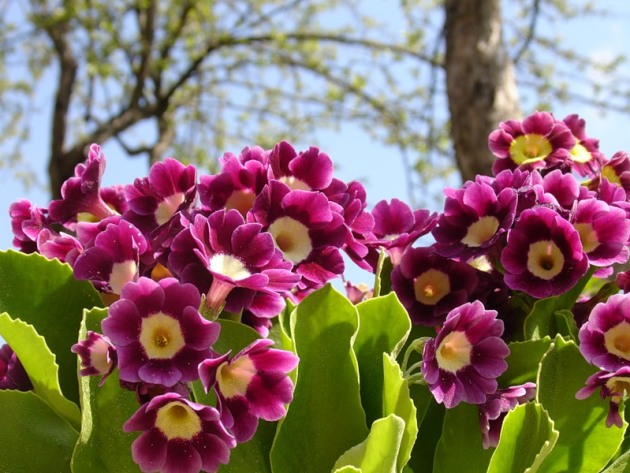
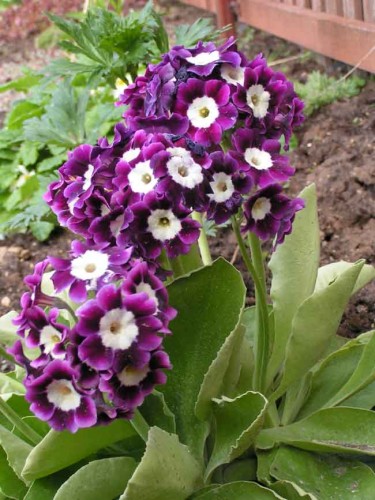
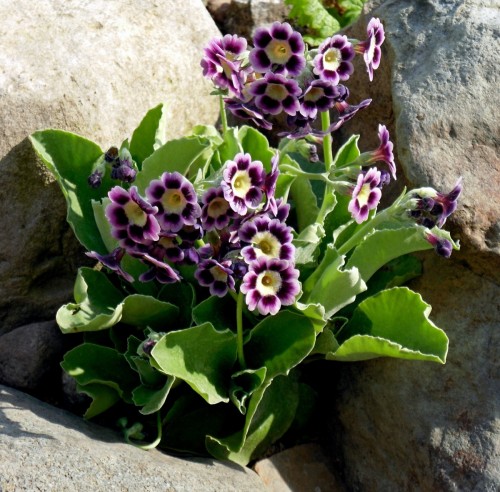
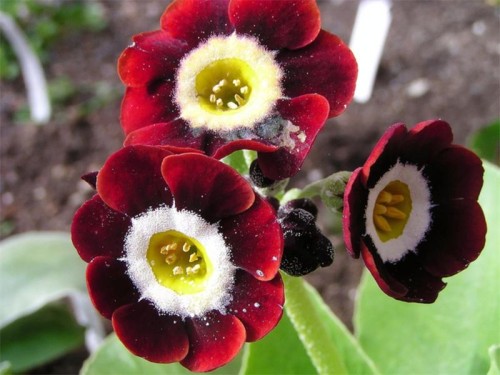
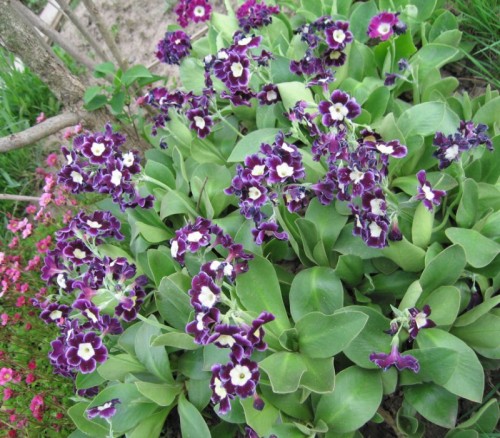

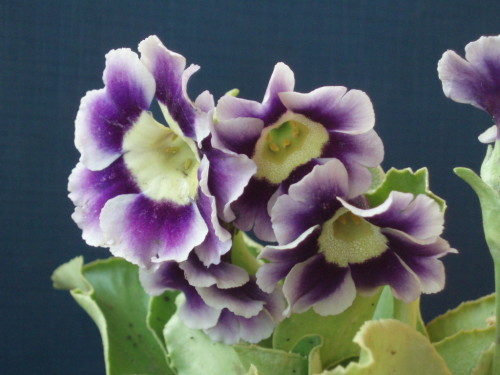
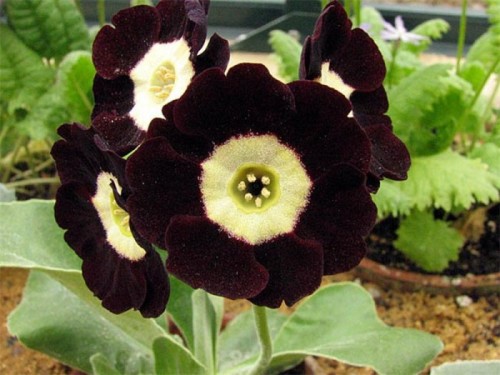
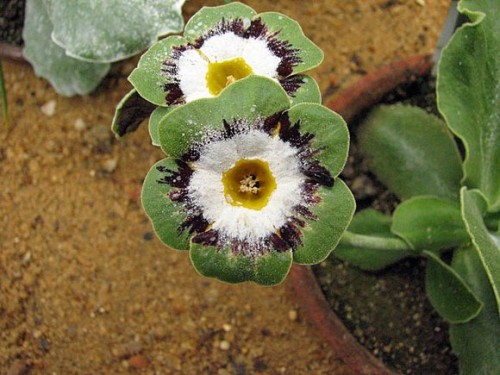
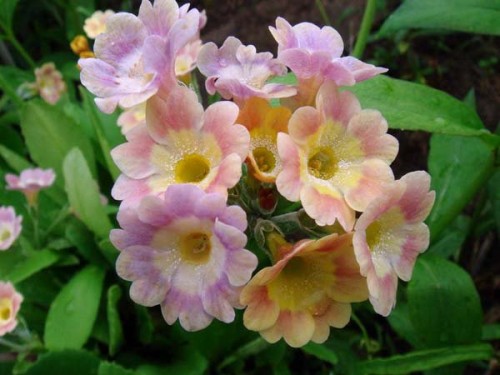
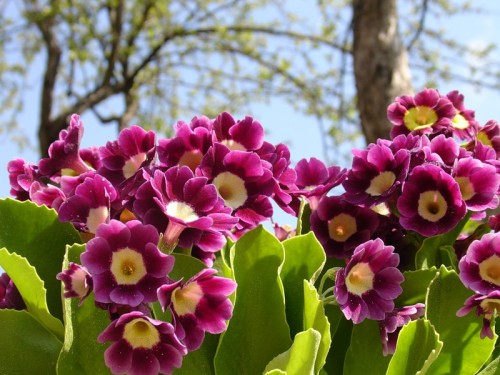












 Start a discussion ...
Start a discussion ...